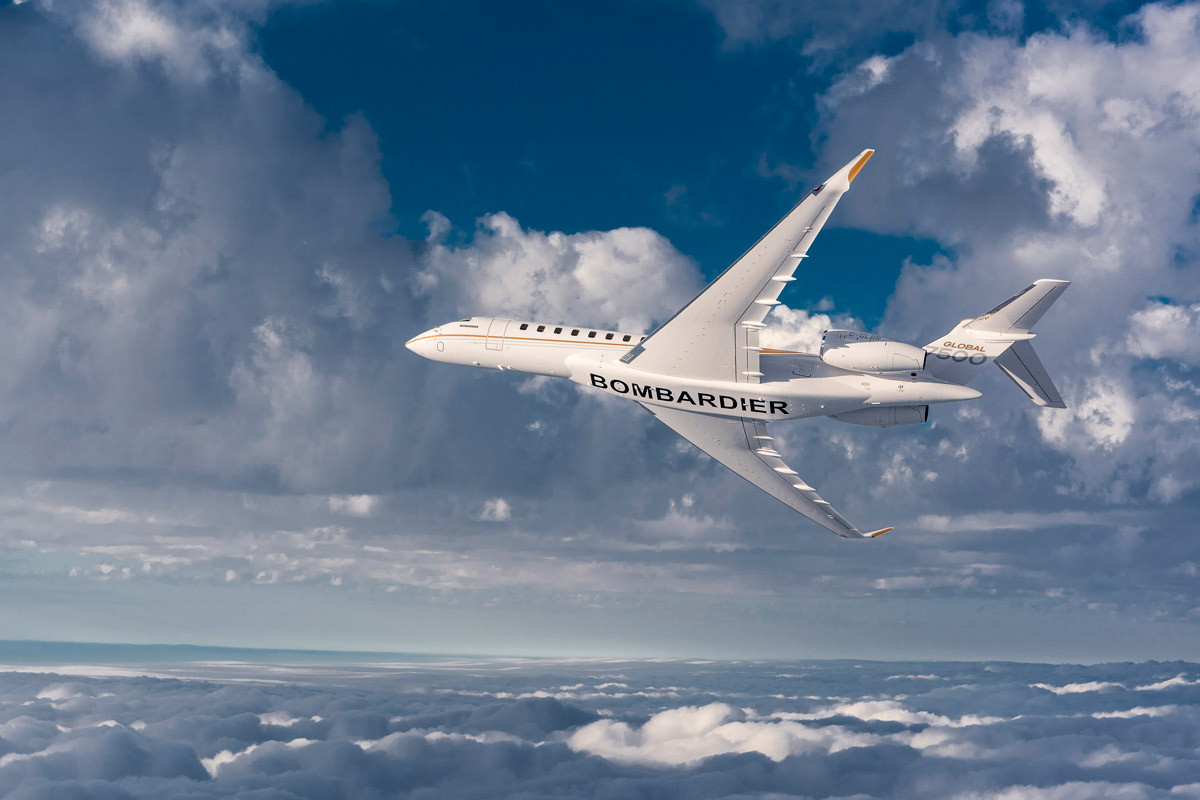Things are banging on all cylinders for Bombardier lately, who in an effort to survive a previous bad bet on jetliners shed all of its business units except business jet manufacturing. Words by Brian Foley.

Slimming down from a multinational conglomerate to a one-trick pony with a crushing $9 billion debt load would seem like the beginning of the end, but during its first 2 years the reconstituted company has proven otherwise.
The first scare under its new identity came when COVID-19 lockdowns closed the factory, disrupted the supply chain and gave would-be buyers a reason to pause due to economic uncertainty. Shortly thereafter the pandemic instead became a boon to the private jet industry as first-time flyers sought ways to circumvent the public airport petri dish and reduced airline schedules.
Bombardier was at the right place at the right time with a family of business jets to meet this sudden market demand for new aircraft, which buyers were forced to turn to after the late model preowned supply was completely picked over. This prosperity was shared by all bizjet manufacturers as demand outstripped supply granting them negotiating leverage and in turn pricing power.
For whatever reason, be it supply chain challenges or not wanting to further extend itself, Bombardier only produced the same number of planes in 2022 as they did in 2021, undoubtedly missing out on making more deliveries and revenues. Despite this, plane backlogs continued to grow and like a responsible borrower, the company dutifully paid down its debt by almost half raising its credit ratings.
Citing 2020-2022 revenue growth of 23% and a quadrupling of profitability, combined with diversifying beyond civil business jets with its year-old Defense Division, the company revised its 2025 financial projections upwards by 20% for revenues and 8% for profits, while anticipating further debt reductions. Having broadened into military will allow it to better weather the ups and downs of the highly cyclical civil private jet market.
While in a much better place today, there are still potential risks to Bombardier’s Cinderella story. Although their top-end Global series of aircraft models are fresh, their smaller Challenger counterparts are in need of expensive, meaningful improvements to remain competitive and to differentiate them from the same models on the less-expensive preowned market.
As for the Global jets, the company is in the middle of moving the Global business jets to a new production facility, which could cause disruptions. There are also a bevy of new products coming from Dassault and Gulfstream that will directly compete.
Further, the pandemic-fueled furor over private aviation has subsided as evidenced by lower new aircraft book-to-bill sales activity, reduced charter usage and a sharp increase in the number of preowned jets for sale. Regardless, I forecast that the business aviation industry as a whole will enjoy a permanent 10% addressable market expansion thanks to some of those new flyers sticking with private air travel even after things return to normal.
Due to the sudden popularity and scarcity of new aircraft, manufacturers are now more at risk of having speculators in their order books. With a relatively modest deposit they can buy an aircraft delivery position with no intention of ever taking it and instead flip it to an impatient buyer at a premium. Due to their tendency to cancel orders when the market drops, speculators make for a less sticky order book.
Another risk is that one-third of 2022 worldwide business jet deliveries went to large charter and fractional fleet operators. Like the airlines, these types of companies will cancel or defer their orders in a heartbeat should demand ebb.
To this point, branded charter activity has fallen by 23% year-over-year in the worldТs busiest market in North America, but still remains 10% over pre-pandemic levels according to WINGX. Bombardier has oversized exposure to one fleet client who if ever were to fall on bad times, could flood the market with over 150 late model Bombardier aircraft that would compete directly with new sales for many years to come.
Lastly, business jet sales donТt do well in times of economic downturn or uncertainty. As such, there are hopes within the industry that the next recession will be a soft landing.
Despite all of these what-ifТs, for now the all-new Bombardier is proving its ability to endure as a pure-play business jet manufacturer. The company can continue to buttress its financial footing or in the longer-term tie-up with another company. After all the company has been through, itТs nice to have choices.

